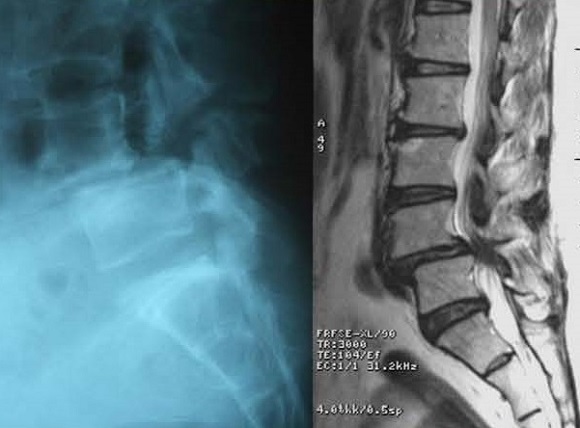It refers to a condition where there is a displacement of one’s lumbar vertebra over another or the sacrum. Pathologically, it is classified as congenital, isthmic, adult degenerative, traumatic, and post-surgical type. The isthmic type and the adult degenerative type are the commoner types that are found in adult population. Spondylolisthesis can be graded according to the percentage of slip as measured by the length between the posterior margin of inferior end plate over the superior end plate of distal segment.
In degenerative type of the spondylolisthesis, the slip is due to the instability between the vertebrae. The instability is the results of a degenerative process, including the loss of support from the intervertebral disc, and repeated stress and remodeling at the facet joint. It is commoner in females, usually presents around or after the age of 60, and usually between the fourth and the fifth lumbar vertebrae because of the shearing forces at that level. Patients usually present with mechanical back pain due to instability, or it may be accompanied by radiculopathy and spinal stenosis symptoms, due to the change of spinal canal diameter.

Treatment of Spondylolisthesis
Symptomatic patients could have a trial of physical therapy, analgesics and nonsteroidal anti-inflammatory drugs for control of symptoms. Truncal exercise and aerobic exercise could be started for a better balance and endurance.
Operation would be indicated if conservative treatments failed, with persistent radicular or claudication pain. The goal of surgery is to decompress the nervous structure, as well as fusion and anterior column augmentation (by reconstruction cage or bone graft) to regain segmental stability.
